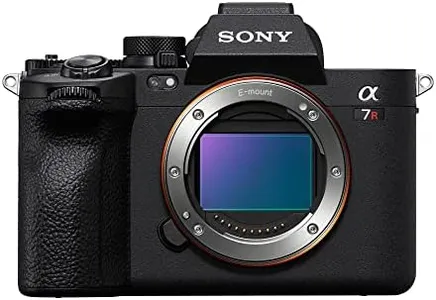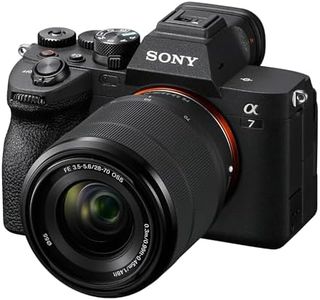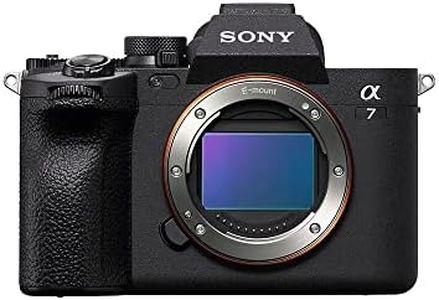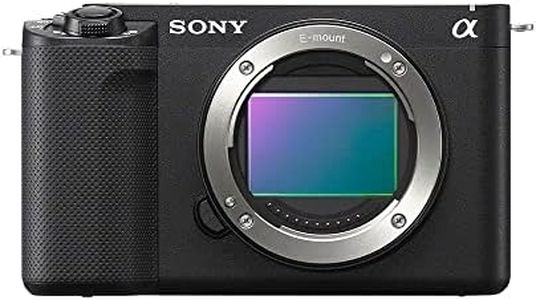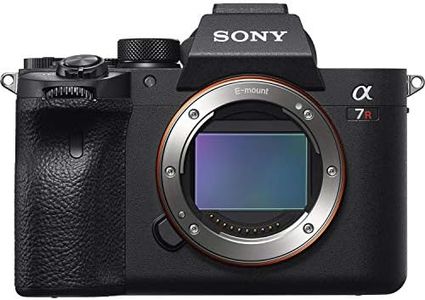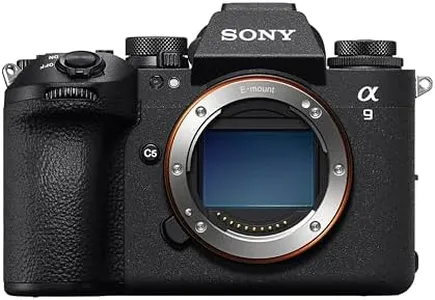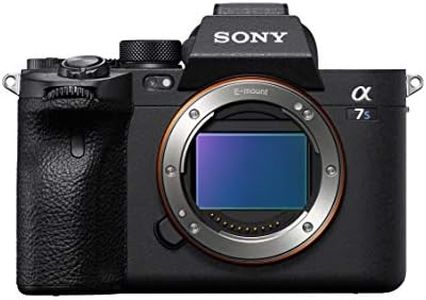We Use CookiesWe use cookies to enhance the security, performance,
functionality and for analytical and promotional activities. By continuing to browse this site you
are agreeing to our privacy policy
10 Best Sony Full Frame Mirrorless
From leading brands and best sellers available on the web.Buying Guide for the Best Sony Full Frame Mirrorless
Choosing a full-frame mirrorless camera can be exciting, as these cameras are known for their outstanding image quality and flexibility. When picking the right one for you, focus on how you plan to use the camera—whether it's for travel, professional work, portraits, landscapes, or video. Think about portability, ease of use, and what features matter most for your photography style. Don't get overwhelmed by the array of features; instead, learn what each key specification means and how it could impact your experience.Sensor ResolutionSensor resolution, measured in megapixels (MP), tells you how much detail the camera can capture. Higher megapixels allow you to print larger photos or crop images without losing detail. Cameras with 20-30MP are versatile and offer a good mix of file size and detail, perfect for most uses like general photography and travel. 30-45MP cameras capture exceptional detail, which is useful for landscape or studio photography, but they tend to require more storage space and powerful computers for editing. Above that, ultra-high resolutions are best for specialized uses like commercial or fine art work. For most users, a mid-range in megapixels is sufficient unless you need extremely large prints or heavy cropping.
Autofocus SystemThe autofocus (AF) system determines how quickly and accurately the camera locks onto a subject. A more advanced AF system provides faster and more reliable focus, especially with moving subjects. Basic AF systems with fewer focus points suit static subjects or slower photography styles, while advanced systems with hundreds of focus points and subject tracking are great for sports, wildlife, or action photography. If you often photograph kids, pets, or events, prioritize a camera with a sophisticated autofocus system. For still life or landscapes, a basic system is usually enough.
Image StabilizationImage stabilization helps reduce blur caused by camera shake, which is especially useful when shooting handheld, in low light, or with telephoto lenses. Some cameras have in-body image stabilization (IBIS), which works with any lens you use. Others rely on stabilization built into certain lenses. If you shoot handheld often, travel, or do video work, having good in-body stabilization is a big benefit. If you always use a tripod or mostly shoot static scenes, it might not be as critical.
Video CapabilitiesMany mirrorless cameras offer strong video features, like 4K or higher recording, different frame rates, and good audio inputs. If you plan to shoot video as well as photos, look at the camera’s maximum video resolution, frame rates (like 24, 30, or 60 frames per second), and additional features such as microphone ports, headphone jacks, and in-body stabilization. Basic video capabilities are fine for casual clips, but advanced features are important if you want to create professional-looking content.
Viewfinder and LCD ScreenThe electronic viewfinder (EVF) and rear LCD screen are your windows into the scene you're photographing. Higher-resolution EVFs give a clearer, more detailed preview. Tilt or fully articulating screens can help when shooting at tricky angles or for vlogging. Simple fixed screens are fine for straightforward use, but if you value flexibility or plan to shoot video/selfies, a moveable screen is helpful. Choose based on how you prefer to compose shots and whether you shoot from unusual angles.
Size and WeightMirrorless cameras are typically lighter and more compact than their DSLR counterparts, but full-frame models can still be substantial. If you travel a lot or want a camera for everyday use, look for a lighter, smaller body. Larger bodies often provide more buttons and better grip, which some users prefer for prolonged use or with bigger lenses. Your comfort carrying the camera and how often you intend to take it with you should guide you here.
Lens EcosystemThe range of available lenses impacts how much you can grow and experiment with your camera. Some systems offer more choices for different budgets and photo styles, while others are still expanding. If you have specific interests, like macro, wide-angle, or telephoto photography, check that compatible lenses are available. Even if you start with just one lens, knowing you have upgrade options is reassuring and allows your photography to grow.
Battery LifeBattery life tells you how many photos you can take before needing to recharge. Mirrorless batteries tend to drain faster because of the electronic viewfinder and display. If you often shoot long events or on trips without charging options, consider cameras known for better battery life or plan to carry spares. For occasional outings or short shoots, battery life is less critical, but it’s still nice to have some reassurance you won’t miss important moments.
